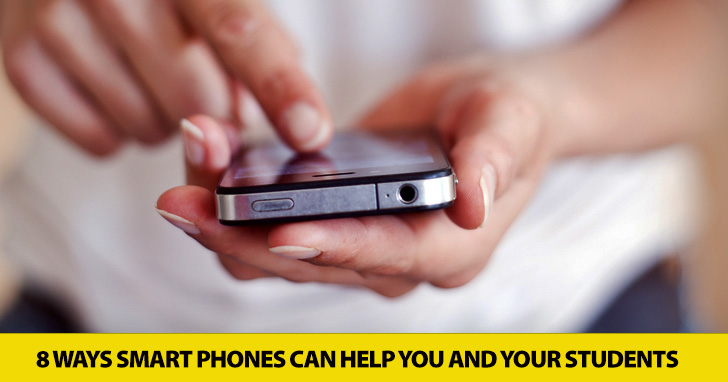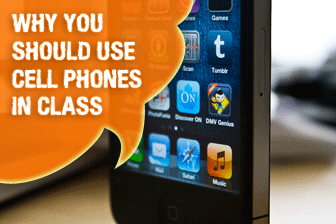Loaded Learning: 8 Ways Smart Phones Can Help You and Your Students in the Classroom


Today’s phones, though, have many features your students can use to their advantage when learning English, and allowing them in the classroom may just help your students learn. However, as a BusyTeacher user has recently pointed out, there are some features of a smart phone which may detract from the ESL student's learning. For example, some cell phones use predictive text to autocorrect English. Students with a tool like this may be likely to feign understanding of English spelling and conjugation. Here are some activities you might want to try in class that will also convince you cell phones really can be put to positive use in class.

Since most of today’s cell phones include a camera feature, phones can be a terrific way to help your students learn new vocabulary. Set a precedent in your class that students can bring in cell phone pictures of objects they see outside the classroom, objects that they do not now possess English vocabulary to describe. Pass the picture around the class and see if anyone can give their fellow student an answer to his vocabulary conundrum, or give the answer yourself if no one else has a ready answer!
On the flip side, you can give your students a set of words that corresponds with a unit you are studying in class and send them out on a picture scavenger hunt. This will work particularly well with very concrete sets of vocabulary, words that your students would use and see examples of on a daily basis. Send groups out with vocabulary lists and camera phones and see how many they can find before returning to class at the assigned time.
For second language learners, visual clues are very important when it comes to communicating. Unfortunately, real life language situations do not always give ESL students ideal situations for communicating in English, for example, language exchanged over the phone. Cell phone conversations can give your students a chance to practice conversational skills without visual input to aid comprehension. Though they may be challenging, they will ultimately be beneficial to your students and their language studies.
Even more challenging to your students’ listening skills is listening to a recorded message via voicemail. They will have the same challenges that come from lack of visual input, but they will additionally have the distortions that come from a digital recording. Be creative and send your students regular voice messages. Use a group message to your class to assign homework or give information that they will need for class the next day. The group message will save you from having to repeat the same message twenty times and your students will still reap the benefits that come with the voicemail challenge.
In reading class, cell phones can play a valuable part as well. The next time you want your students to write a summary of something they have read, have them text it to you or your website. Because many phones have a strict and very low limit on the number of characters one text can contain, it will force your students to be concise and avoid trivial and useless words in their summaries.
In writing, use cell phones as inspiration for writing assignments. Have students take pictures of people or scenes they see outside the classroom for inspiration when they write inside the classroom. They may want to take pictures of interesting buildings, beautiful scenery or interesting people. For a real challenge, have students exchange phones and pictures and be inspired by their classmates’ photos.
Or have your students reenact a piece of literature they read in class in play format. As groups of students perform in front of the class, the rest of the students use their phones to take pictures. After everyone has performed and taken at least one picture, have your students use one of their pictures to write about what was happening in the selection at that point.
If you ever find yourself frustrated because you do not have enough internet resources for your classroom, allowing your students to use their phones for internet access in class can alleviate that problem. Your students can then use the reference sources available online as well as do research right in class. Since they are using their phones, you will not need wifi or computers in your classroom.
By allowing and encouraging cell phones in the ESL classroom, you will have a unique bank of resources at your fingertips, and your students’, ready to move them toward language fluency in English.
Do you allow cell phones in your classroom? Why/why not?